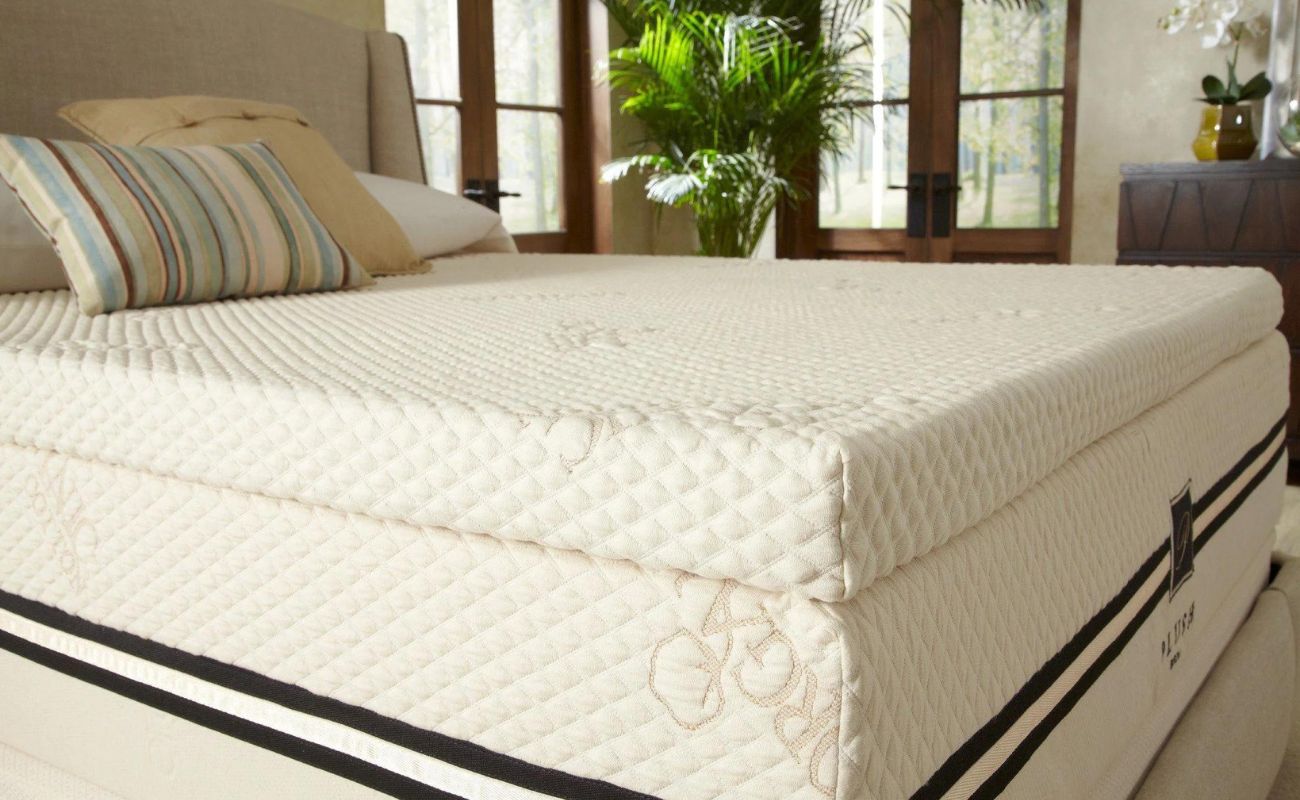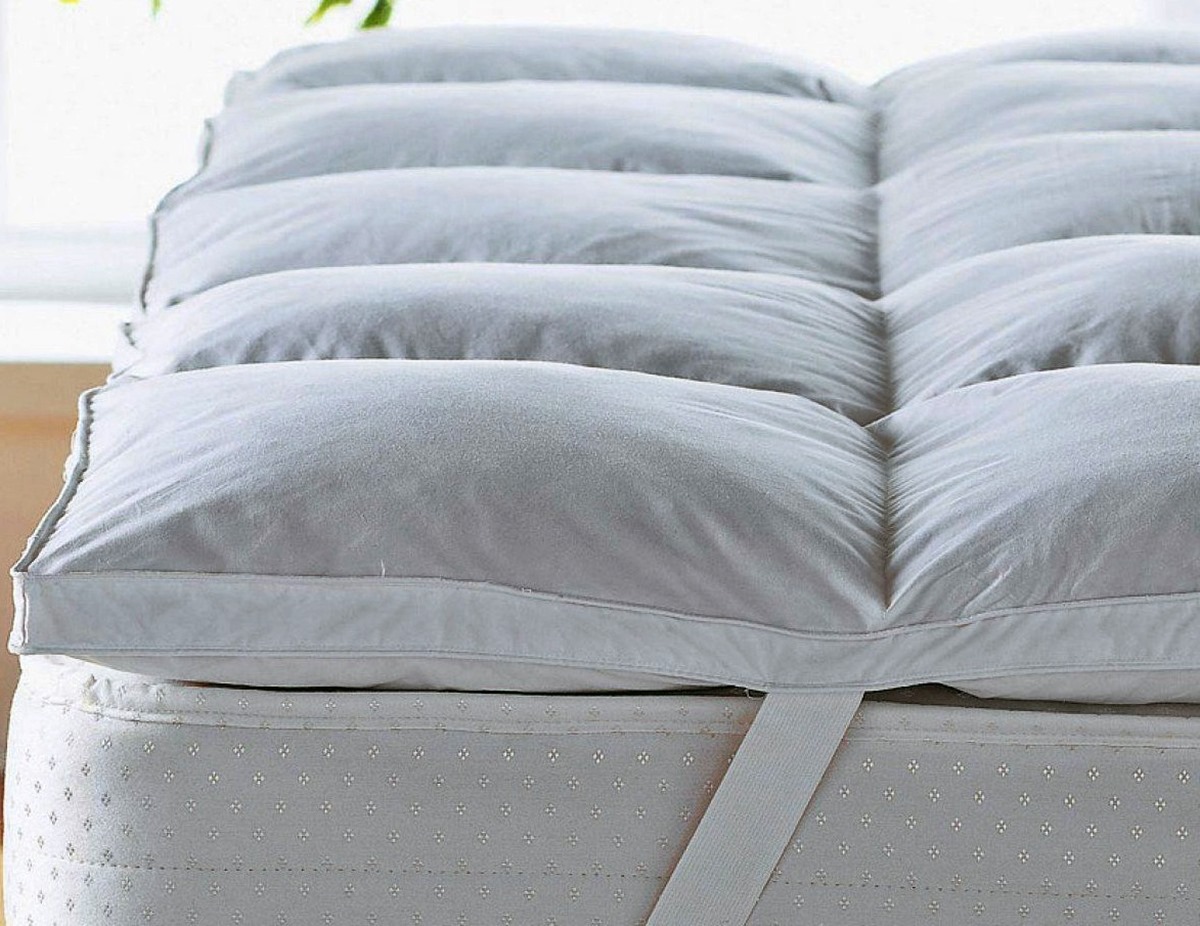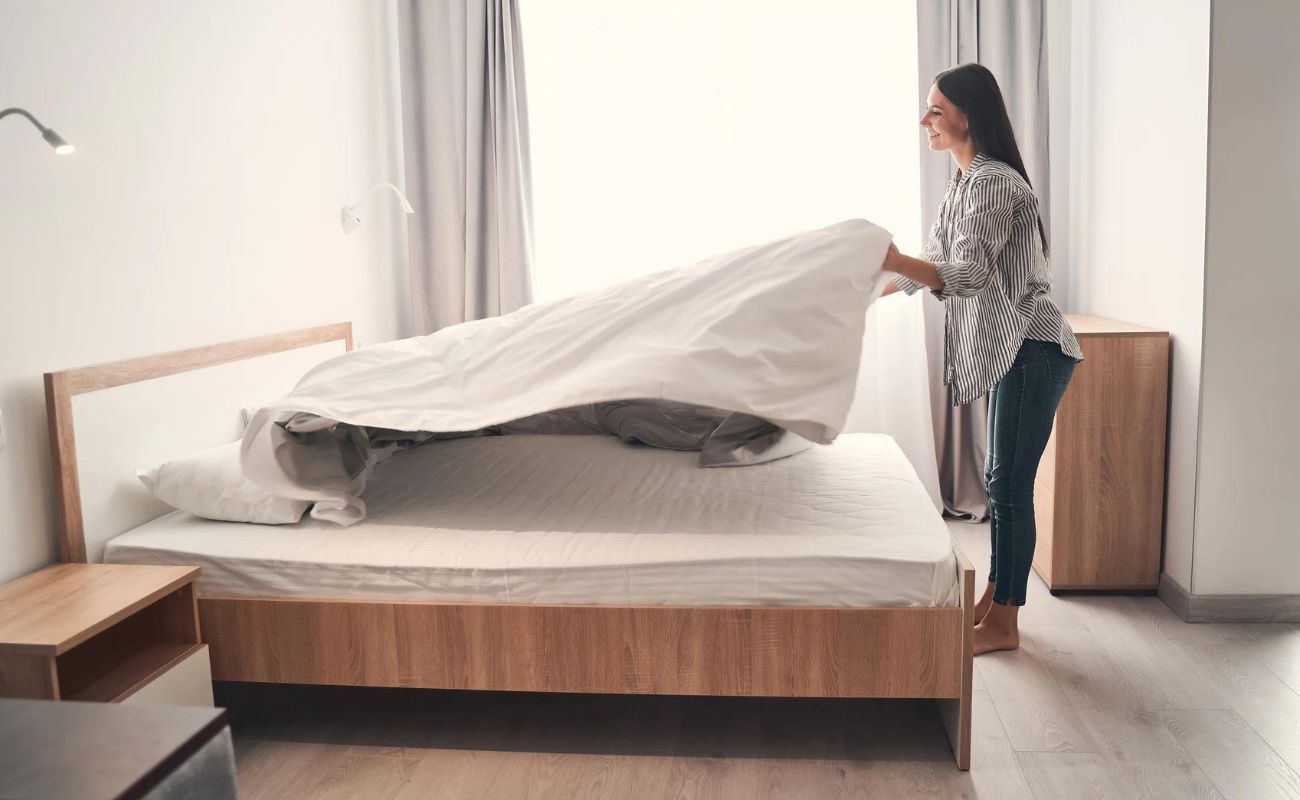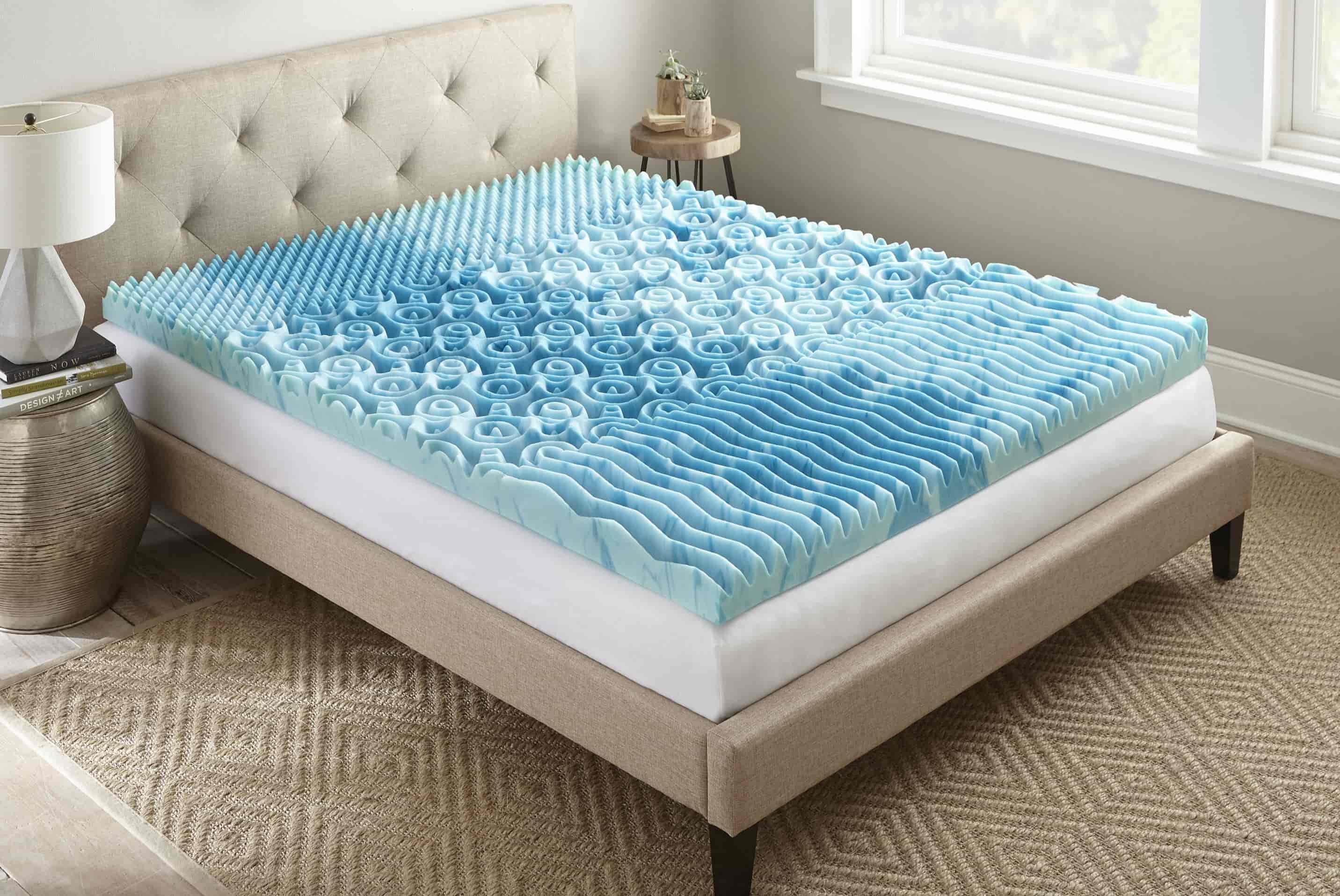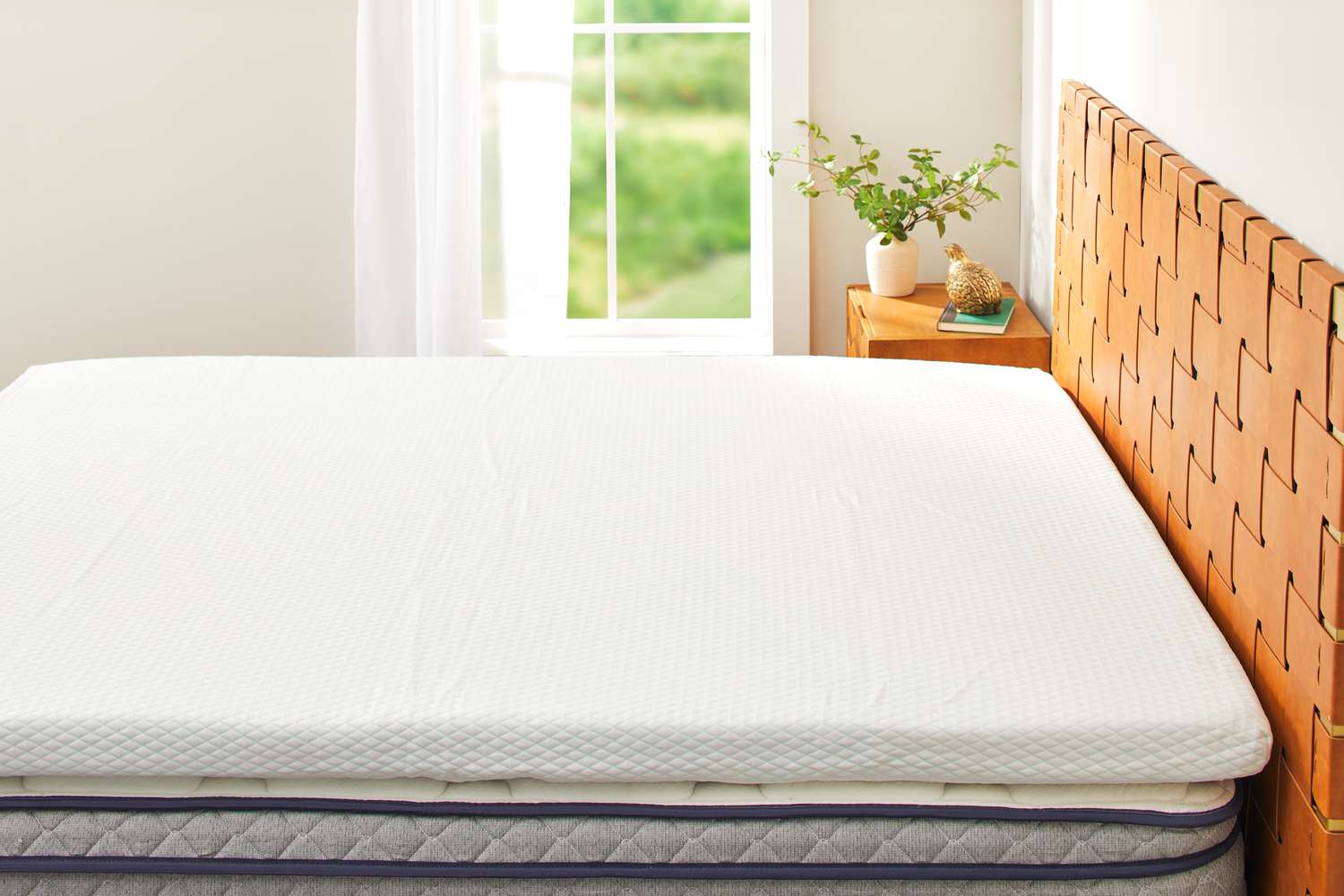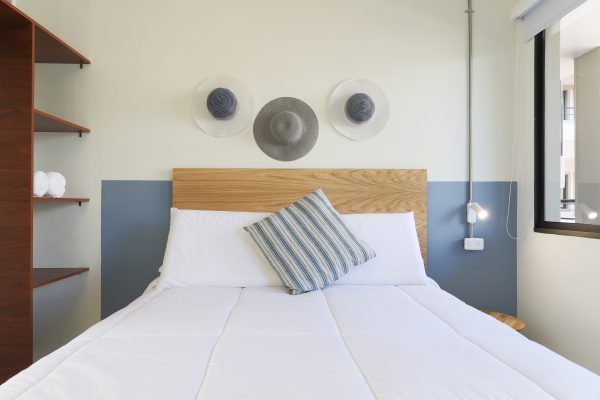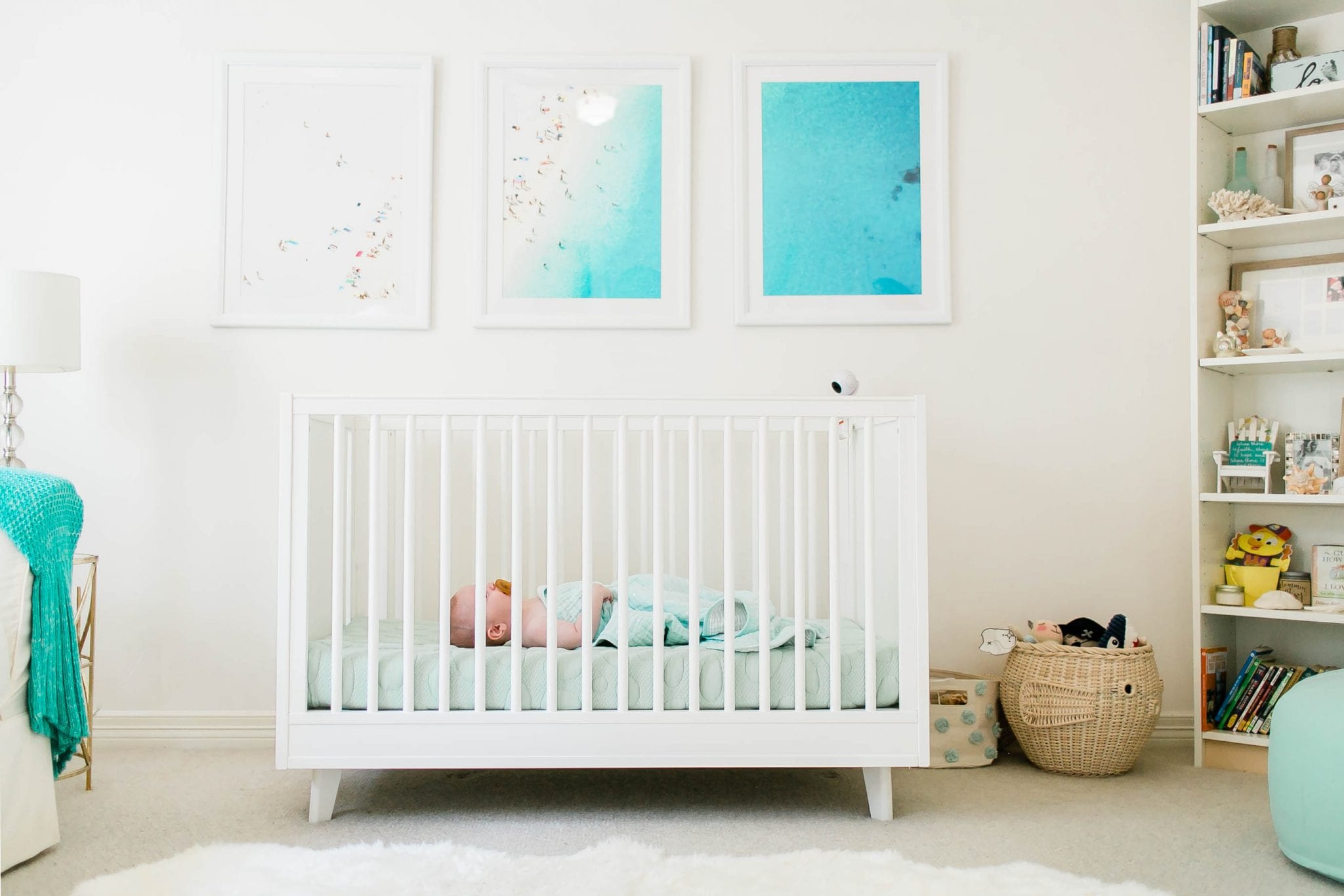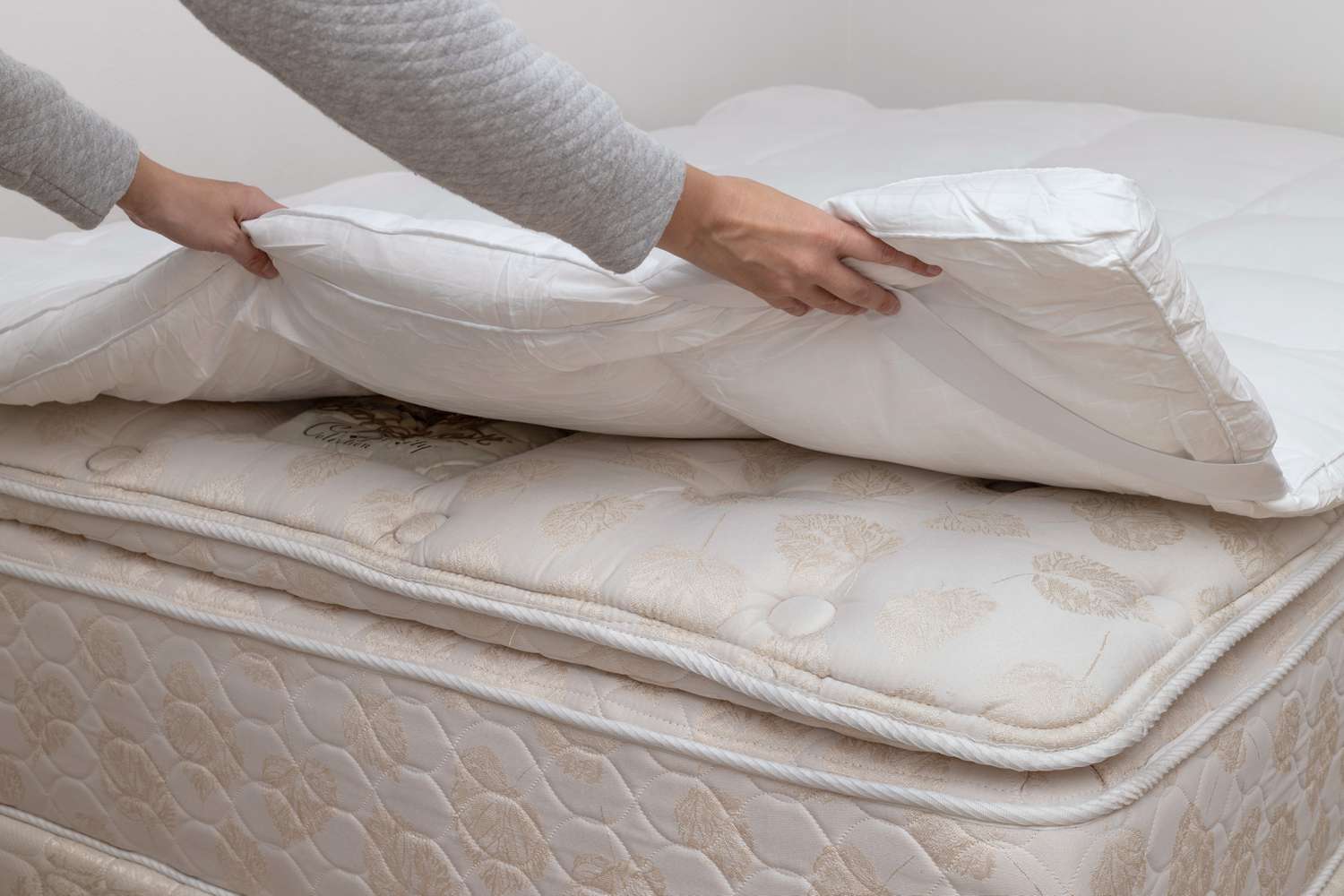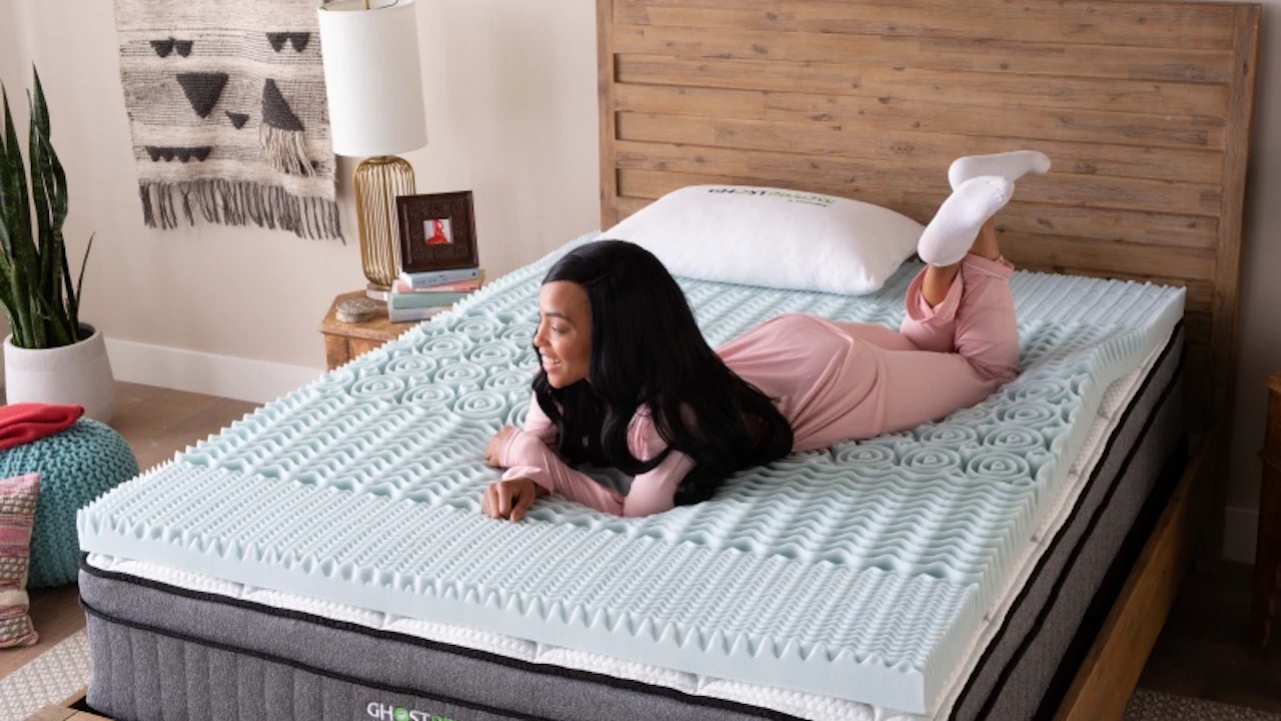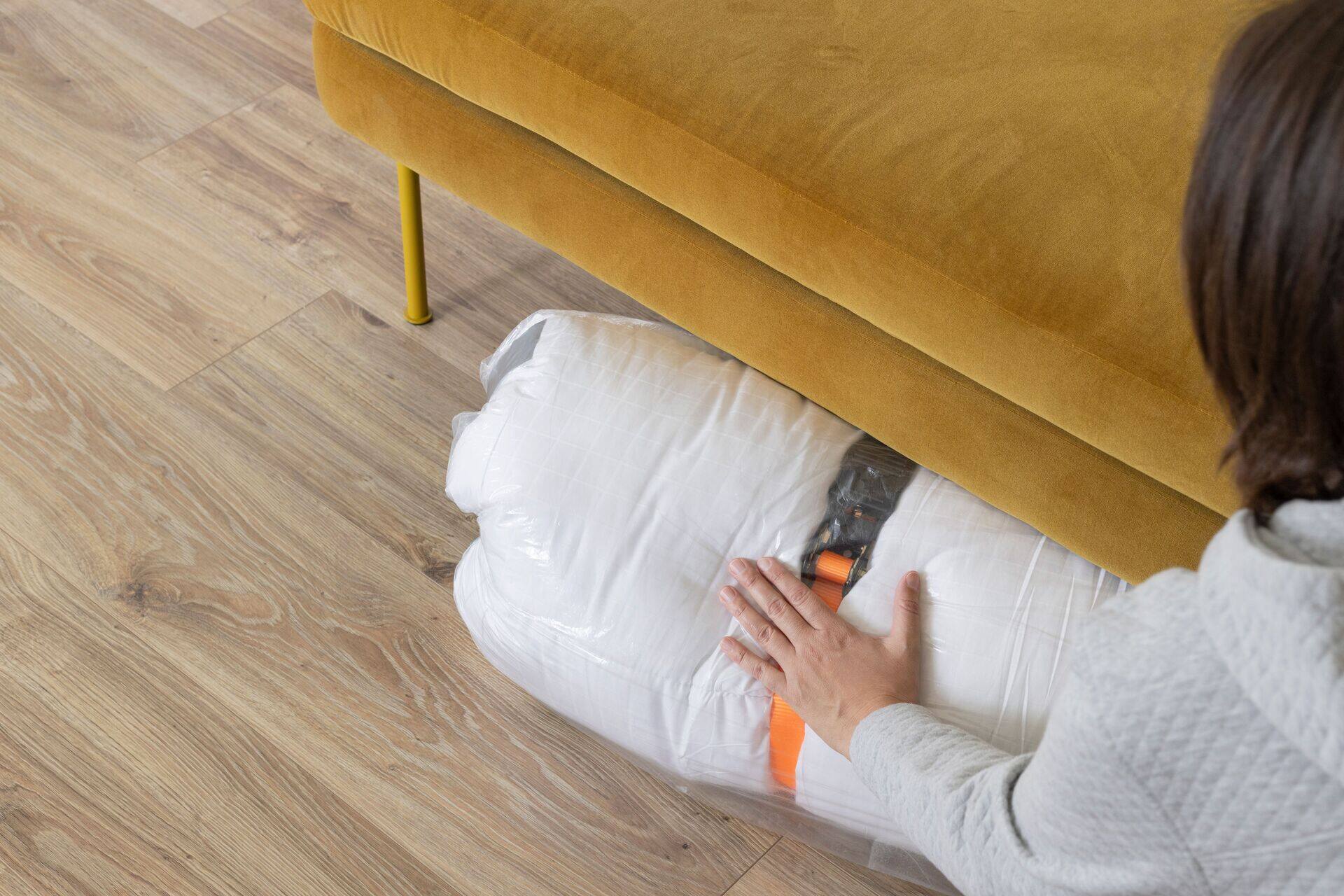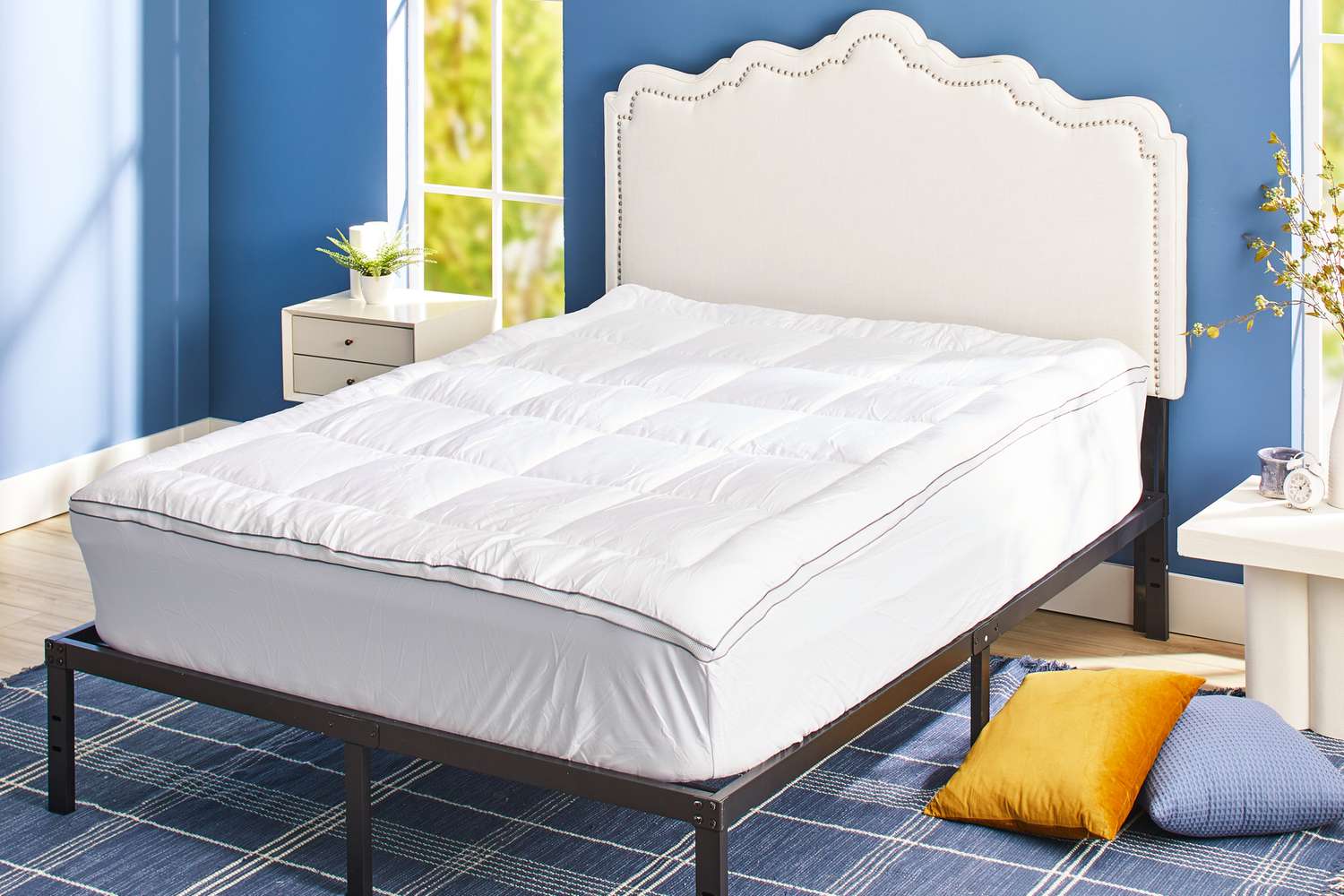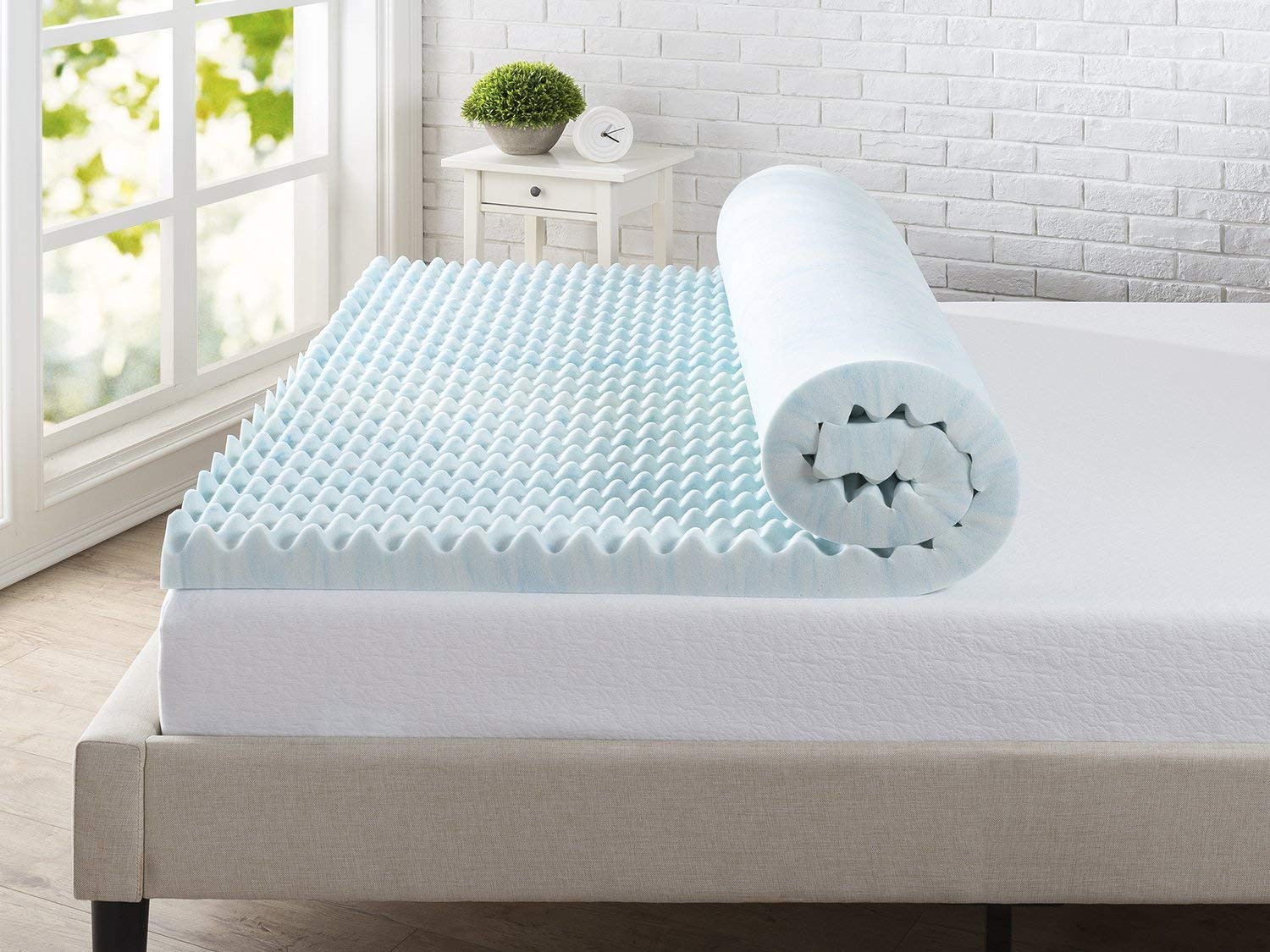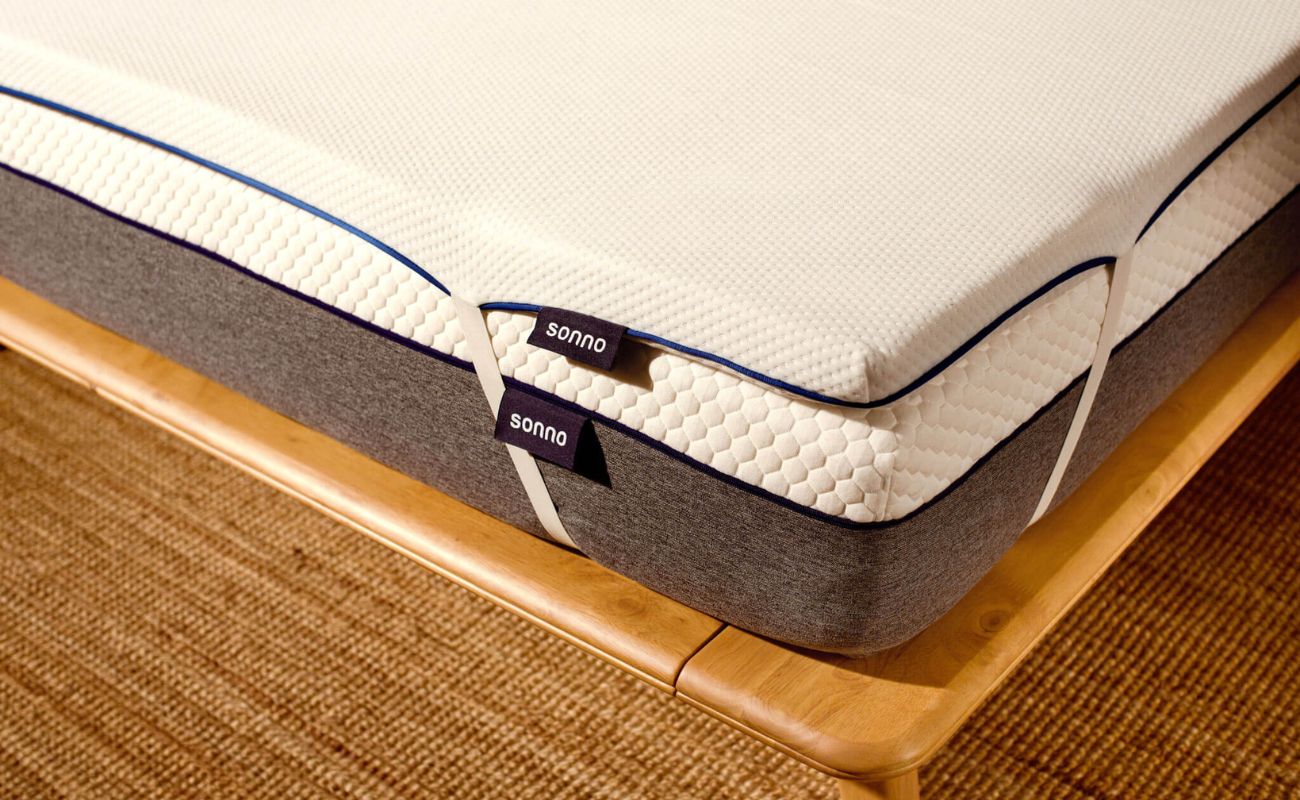Home>Furniture>Bedroom Furniture>What To Look For In A Mattress Topper
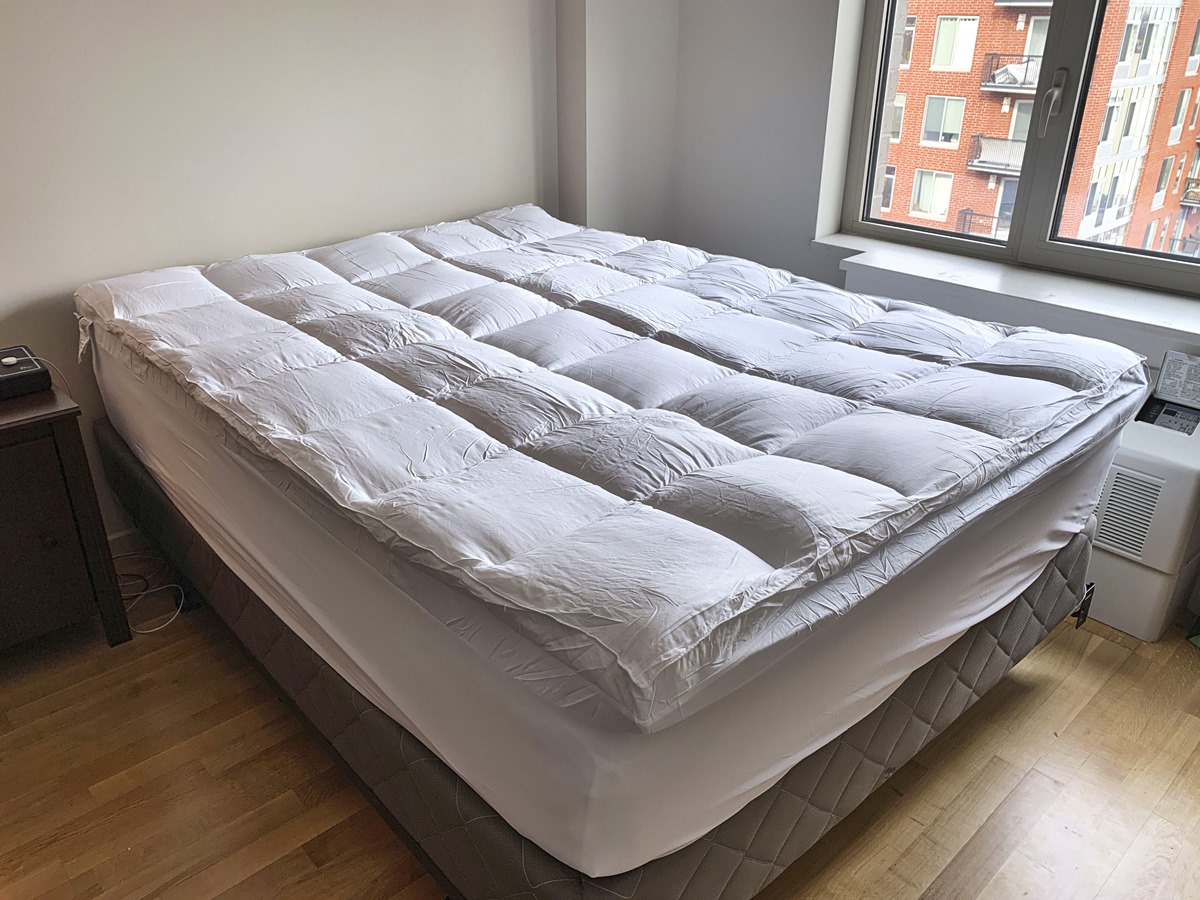

Bedroom Furniture
What To Look For In A Mattress Topper
Modified: January 18, 2024
Find the perfect mattress topper for your bedroom furniture. Discover what to look for to ensure a comfortable and revitalizing sleep experience.
(Many of the links in this article redirect to a specific reviewed product. Your purchase of these products through affiliate links helps to generate commission for Storables.com, at no extra cost. Learn more)
Introduction
When it comes to creating a comfortable and cozy bedroom, one essential element that should not be overlooked is a high-quality mattress topper. A mattress topper is a removable layer of padding that sits on top of your existing mattress, providing an extra layer of comfort and support. Whether you’re looking to add softness to a firm mattress or increase the support of a worn-out mattress, a mattress topper can be a game-changer in enhancing your sleep quality.
Choosing the right mattress topper can be a daunting task, especially with so many options available in the market. But fear not! In this article, we will guide you through the key factors to consider when selecting a mattress topper that will meet your specific needs and preferences. From comfort and support to durability and value for money, we’ve got you covered.
So, let’s dive right in and explore the essential aspects of a mattress topper that you should look out for.
Key Takeaways:
- Enhance your sleep quality by choosing a mattress topper that aligns with your comfort and support needs, material preferences, and breathability for a restful night’s sleep.
- Prioritize durability, allergen resistance, and easy maintenance when selecting a mattress topper to ensure long-lasting comfort, hygiene, and value for money.
Read more: What Mattress Toppers Are Best
Comfort and Support
When it comes to mattress toppers, comfort and support are crucial factors to consider. After all, the primary goal of a mattress topper is to enhance your sleeping experience and provide an extra layer of comfort. The level of comfort offered by a mattress topper depends on various factors, including its thickness, density, and material.
The thickness of a mattress topper plays a significant role in determining the comfort it provides. Generally, thicker toppers offer more cushioning and a plusher feel, perfect for those who prefer a softer sleeping surface. Thinner toppers, on the other hand, provide a subtle layer of comfort without drastically altering the feel of the mattress beneath.
The density of the mattress topper is another critical factor that affects both comfort and support. A denser topper offers better support, especially for those with back or joint pain. It helps distribute your body weight evenly and alleviates pressure points, promoting a more restful sleep. However, keep in mind that denser toppers could be firmer, so choosing the right balance between support and softness is essential.
Furthermore, the material type of the mattress topper greatly influences its comfort and support qualities. Common materials used in mattress toppers include memory foam, latex, down feathers, and fiberfill. Memory foam toppers are known for their contouring ability, cradling your body and relieving pressure points. Latex toppers offer a responsive and bouncy surface, providing excellent support and breathability. Down feather toppers give a plush and luxurious feel, providing softness and insulation. Fiberfill toppers mimic the feeling of down but are typically more affordable.
Ultimately, comfort and support are subjective preferences, so make sure to choose a mattress topper that caters to your individual needs. Consider your sleeping position, body type, and any specific comfort requirements you may have to ensure you select a topper that will guarantee a restful night’s sleep.
Thickness and Density
When choosing a mattress topper, one of the crucial aspects to consider is its thickness and density. These two factors play a significant role in determining the level of comfort and support a topper provides.
The thickness of a mattress topper is typically measured in inches, and it can range from 1 inch to 4 inches or more. The thickness you choose depends on personal preference and the desired effect you want to achieve. A thicker mattress topper will offer more cushioning and can help soften a firm mattress or provide additional support to a sagging mattress. It can be particularly beneficial for people who experience body aches or pressure points. On the other hand, a thinner topper may provide a subtle layer of comfort without drastically changing the feel of the mattress beneath.
Another important factor to consider is the density of the mattress topper. Density refers to the weight of the topper’s material per cubic foot. The density of a topper determines its firmness and support level. Higher density toppers are generally firmer and offer better support, making them ideal for individuals with back or joint pain. However, keep in mind that a higher density topper may also feel denser and provide less plushness. Lower density toppers are typically softer and provide a more cushioned feel, but they may not offer as much support.
It’s important to strike a balance between thickness and density to find the right combination for your needs. A thicker topper with a lower density may provide a softer feel, while a thinner topper with a higher density may offer more support. Consider your preferences, sleep position, and any specific body issues you may have when selecting the thickness and density of your mattress topper.
Remember that thickness and density can also affect the overall weight and breathability of the mattress topper. Thicker and denser toppers tend to retain more heat, so if you’re a hot sleeper or live in a warm climate, you may want to opt for a thinner topper with a more breathable material.
Ultimately, the right combination of thickness and density will depend on your personal preferences and requirements. Take the time to consider your sleeping needs and experiment with different options to find the perfect balance of comfort and support for a restful night’s sleep.
Material Type
When it comes to choosing a mattress topper, the material type is a crucial factor to consider. Different materials offer unique benefits and characteristics that can greatly affect your sleeping experience. Here are some of the most common materials used in mattress toppers:
- Memory Foam: Memory foam mattress toppers are known for their excellent contouring ability. They conform to the shape of your body, providing personalized support and relieving pressure points. Memory foam toppers are great for individuals with chronic pain or who prefer a softer sleeping surface.
- Latex: Latex mattress toppers are highly durable and breathable. They offer a responsive and bouncy surface that provides excellent support and comfort. Latex is also naturally resistant to dust mites and allergens, making it a great choice for those with allergies or asthma.
- Down Feathers: Down feather toppers provide a plush and luxurious feel. They offer exceptional softness and insulation, making them ideal for colder climates. However, down feather toppers may require regular fluffing to maintain their loftiness.
- Fiberfill: Fiberfill mattress toppers are typically made of polyester or a blend of synthetic fibers. They mimic the softness and loft of down without the risk of allergies. Fiberfill toppers are more affordable compared to other materials and are easy to care for.
It’s important to consider your personal preferences and specific needs when selecting a material type. If you have allergies or sensitivities, opt for hypoallergenic materials like latex or fiberfill. If you prefer a plush and contouring feel, memory foam or down feather toppers may be the best choice. Additionally, consider the breathability of the material, especially if you tend to sleep hot.
Keep in mind that each material has its own pros and cons, so it’s essential to find the one that aligns with your preferences. If possible, try out different mattress toppers in various materials to determine which one provides the optimal balance of comfort and support for your sleep needs.
Breathability and Temperature Regulation
One crucial aspect to consider when choosing a mattress topper is its breathability and ability to regulate temperature. A mattress topper that effectively allows air circulation can help keep you cool and comfortable throughout the night, especially if you tend to sleep hot.
Memory foam mattress toppers, while providing excellent contouring and support, can sometimes retain heat and cause discomfort for individuals who are prone to overheating during sleep. However, advancements in technology have led to the development of memory foam with enhanced breathability features, such as open-cell constructions or gel-infused foams. These innovations promote better airflow and heat dissipation, ensuring a cooler sleep environment.
Latex mattress toppers are naturally breathable and have the ability to regulate temperature. Latex allows air to flow freely, preventing heat from being trapped and contributing to a cooler sleep experience. Additionally, latex is resistant to dust mites and other allergens, making it a great choice for those with allergies or sensitivities.
Down feather mattress toppers offer excellent breathability and temperature regulation. Down clusters have natural air pockets that allow for efficient air circulation, keeping you cool during warmer nights and providing warmth during colder seasons. However, it’s important to note that down feather toppers may not be suitable for individuals with allergies, as they can harbor dust mites.
Fiberfill mattress toppers are generally more breathable compared to memory foam or latex. The synthetic fibers used in fiberfill toppers promote airflow, helping to regulate temperature and prevent heat buildup. This makes them a good option for those who want a cooler sleeping surface.
When selecting a mattress topper, consider your personal preferences and sleep tendencies. If you tend to sleep hot, prioritize a topper with good breathability features. Look for materials that promote airflow, such as latex or gel-infused memory foam. Additionally, consider the climate you live in and how it may affect your sleeping comfort.
By choosing a mattress topper that prioritizes breathability and temperature regulation, you can ensure a more pleasant and restful night’s sleep, free from excessive heat and discomfort.
When looking for a mattress topper, consider the material, thickness, and density to ensure it provides the right level of comfort and support for your needs.
Read more: What Are The Best Mattress Toppers
Allergen Resistance
For individuals who suffer from allergies or have sensitivities to certain allergens, considering the allergen resistance of a mattress topper is crucial. An allergen-resistant topper can help create a healthier and more comfortable sleep environment by minimizing exposure to common allergens.
Latex mattress toppers are naturally resistant to allergens such as dust mites, mold, and mildew. Latex has innate antimicrobial properties that prevent the accumulation of allergens and the growth of bacteria. This makes latex an excellent choice for individuals with allergies or asthma.
Memory foam mattress toppers, especially those made with high-density foam, can provide a barrier against common allergens. The dense structure of memory foam prevents allergens from seeping into the topper, making it a hypoallergenic option for those concerned about allergen resistance.
Fiberfill mattress toppers, especially those with synthetic fibers like polyester, are highly resistant to allergens. Synthetic fibers inhibit the growth of dust mites and mold, making them a suitable choice for individuals with allergies or sensitivities. Additionally, fiberfill toppers are often machine washable, allowing for easy removal of allergens.
When selecting a mattress topper, it’s essential to read product descriptions and labels to ensure that it is designed to be allergen-resistant. Look for materials that are specifically touted as hypoallergenic, antimicrobial, or resistant to common allergens. Additionally, consider the maintenance and cleaning instructions of the topper, as regular cleaning can further help in reducing allergens.
Remember that while an allergen-resistant topper can help minimize exposure to common allergens, it is important to take other measures to create a hypoallergenic sleep environment. This may include regularly washing bedding, using dust mite-proof covers, and maintaining a clean and dust-free bedroom.
By selecting a mattress topper with allergen resistance qualities and implementing proper hygiene practices, you can create a sleep sanctuary that supports your health and well-being.
Durability and Longevity
When investing in a mattress topper, it’s important to consider its durability and longevity. A durable topper not only ensures long-lasting comfort but also provides better value for your money in the long run.
The durability of a mattress topper is influenced by various factors, including the material used and the quality of construction. Memory foam and latex toppers are known for their durability, as they can withstand regular use without losing their shape or support. These materials are less prone to sagging or developing indentations over time.
Fiberfill toppers, while generally more affordable, may not be as durable as memory foam or latex. The lifespan of a fiberfill topper can vary depending on the quality of the fibers used. Opting for a fiberfill topper with a higher thread count or a denser filling can improve its durability.
When considering durability, it’s also important to pay attention to the overall quality of construction. Look for mattress toppers with reinforced seams and strong stitching that can withstand frequent use and movement. Additionally, consider the warranty offered by the manufacturer, as it can be an indicator of their confidence in the durability of the product.
To extend the longevity of your mattress topper, it’s essential to properly care for and maintain it. Follow the manufacturer’s instructions regarding cleaning and rotating the topper, if applicable. Regularly airing out the topper and using a mattress protector can also help protect it from spills, stains, and allergens.
Ultimately, while the durability of a mattress topper is important, it’s also a good idea to periodically assess the condition and comfort of your topper. Over time, even the most durable toppers may experience wear and tear, and replacing them when necessary can ensure that you continue to enjoy a comfortable and supportive sleep surface.
By choosing a mattress topper with good durability and making an effort to maintain it properly, you can maximize its lifespan and enjoy years of restful nights.
Easy Care and Maintenance
When selecting a mattress topper, it’s important to consider its ease of care and maintenance. A topper that is easy to clean and maintain not only saves you time and effort but also helps in preserving its longevity and keeping it hygienic.
The care instructions for a mattress topper can vary depending on the material and construction. It’s crucial to follow the manufacturer’s guidelines for cleaning and maintenance to avoid damaging the topper.
Memory foam and latex mattress toppers usually cannot be machine washed. Instead, spot cleaning is recommended using a mild detergent or a solution of water and vinegar. It’s important to allow the topper to thoroughly air dry before putting it back on the bed. Additionally, using a mattress protector or a fitted sheet can help keep the topper clean and protect it from spills and stains.
Fiberfill toppers are often machine washable, making them easier to clean and maintain. However, it’s still important to check the manufacturer’s instructions, as some fiberfill toppers may have specific care requirements. Washing the topper on a gentle cycle with mild detergent and tumble drying on low heat or air drying is typically recommended.
Regularly rotating the mattress topper can also help in maintaining its shape and preventing uneven wear. This is especially important for thicker toppers that may experience compression over time. By rotating the topper every few months, you can ensure more even distribution of weight and prolonged comfort.
Using a mattress protector is another way to protect the topper from spills, stains, and allergens. A waterproof and breathable mattress protector acts as a barrier between the topper and any potential contaminants, making it easier to clean and maintain the topper in the long run.
Overall, it’s important to consider the care and maintenance requirements of a mattress topper that align with your lifestyle and cleaning preferences. Opting for a topper that is easy to care for and maintain can make a significant difference in your overall satisfaction and the longevity of the topper.
Price and Value for Money
Price is an important factor to consider when purchasing a mattress topper. While it’s tempting to opt for the cheapest option available, it’s essential to also consider the value for money that the topper provides. Finding a balance between price and quality will ensure that you make a wise investment in your sleep comfort.
The price of a mattress topper can vary depending on factors such as material, thickness, density, and brand. Memory foam and latex toppers tend to be more expensive compared to fiberfill or down feather options. Thicker and denser toppers are generally pricier due to the higher amount of materials used. Brand reputation and quality will also contribute to the price range of a mattress topper.
When evaluating the value for money, it’s important to consider the durability and lifespan of the topper. While a cheaper topper may seem like a budget-friendly option initially, it may wear out faster and require replacement sooner. On the other hand, investing in a higher-quality topper may provide better longevity and overall value, as it can last for several years without losing its shape or support.
Consider your personal sleep needs and preferences when determining the value for money. If you have specific health concerns or require extra support, investing in a higher-quality topper that offers the necessary features may be worth the cost. However, if you have a shorter-term need or budget constraints, a more affordable option may still provide adequate comfort and support.
It’s also worth considering any warranties or guarantees offered by the manufacturer. A longer warranty can provide peace of mind and assurance of the topper’s quality and durability. Many reputable brands offer warranties ranging from a few years to a decade or more.
To get the best value for your money, it’s recommended to shop around, compare prices, and read customer reviews. Look for promotions or discounts that may be available to help you save on the overall cost. Consider the overall quality, durability, and customer satisfaction of the topper when making your decision.
Remember, the goal is to find a mattress topper that offers a balance between price and value, ensuring that you get the most out of your investment in terms of comfort, durability, and overall satisfaction.
Read more: What Is A Memory Foam Mattress Topper
Conclusion
Selecting the right mattress topper is crucial for creating a comfortable and restful sleep environment. By considering factors such as comfort and support, thickness and density, material type, breathability and temperature regulation, allergen resistance, durability and longevity, easy care and maintenance, as well as price and value for money, you can make an informed decision that best suits your individual needs and preferences.
Comfort and support should be the top priority when choosing a mattress topper. Determine the level of cushioning and firmness that aligns with your preferences, and consider the material type that best suits your needs. Memory foam, latex, down feathers, and fiberfill offer unique characteristics, so select the one that provides the comfort and support you desire.
Thickness and density play a significant role in determining the overall feel and support of the topper. Evaluate your needs and preferences to find the right balance between plushness and support.
Breathability and temperature regulation are essential, especially for hot sleepers. Look for toppers with materials that promote airflow and prevent heat buildup to ensure a cool and comfortable sleep environment.
Allergen resistance is vital if you have allergies or sensitivities. Opt for toppers made with hypoallergenic materials like latex or fiberfill, and consider using a mattress protector to further protect against allergens.
Durability and longevity are key factors to consider to ensure that your investment in a mattress topper lasts for years. Choose a topper made with high-quality materials and proper construction, and follow the manufacturer’s care instructions to maintain its condition.
Easy care and maintenance are essential for hassle-free ownership. Select a mattress topper that is easy to clean and maintain, and consider using a mattress protector to protect against spills and stains.
While price is a consideration, balance it with the overall value for money. Investing in a higher-quality topper may provide better comfort and longevity, ultimately providing better value in the long run.
In conclusion, by carefully considering these factors and evaluating your personal needs, you can select a mattress topper that offers the perfect blend of comfort, support, durability, and value for money. A well-chosen mattress topper will enhance your sleep quality and make your bedroom an oasis of comfort and relaxation.
Frequently Asked Questions about What To Look For In A Mattress Topper
Was this page helpful?
At Storables.com, we guarantee accurate and reliable information. Our content, validated by Expert Board Contributors, is crafted following stringent Editorial Policies. We're committed to providing you with well-researched, expert-backed insights for all your informational needs.
